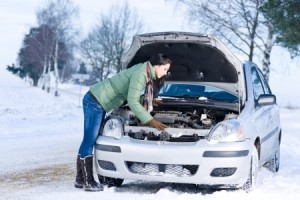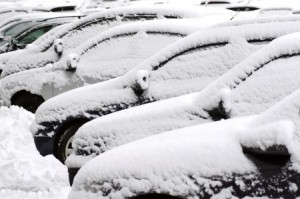 Let’s face it. Just because we get plenty of opportunities to drive in snowy conditions doesn’t mean we’re all experts. Driving takes skill even in perfect conditions, so it’s especially important to practice safe driving habits when the weather is less than ideal. Below, we share five driving tips to remember as the winter weather continues.
Let’s face it. Just because we get plenty of opportunities to drive in snowy conditions doesn’t mean we’re all experts. Driving takes skill even in perfect conditions, so it’s especially important to practice safe driving habits when the weather is less than ideal. Below, we share five driving tips to remember as the winter weather continues.
1. Check Your Tires – Tire tread helps you grip the road, and you’ll need all the tread you can get during a snowstorm. Consider investing in a new set of tires, or swap your current wheels out for a set of winter tires until the roads thaw. If you’re not sure if your current set of tires has enough tread left to keep you safe during the winter, check out our post on “Prepping your car for a road trip†to learn about the Penny Test.
2. Windshield Prep – Make sure your windshield is in top shape to protect against falling snow and slush from other drivers. First, make sure your windshield wipers are in good working order. Before getting in your car, remove any ice that may be stuck to your wipers, and check to ensure they aren’t frozen to the glass. While you’re checking your wipers, if needed, give all your windows a thorough scraping. It’s very unsafe to drive if you can’t see out all your windows. Lastly, make sure you have plenty of windshield wiper fluid. Wiper fluid can help clean off your windshield in the event that a trucker sends slush flying your way.
3. Take It Slow – Give yourself plenty of time to get from one place to another so you can travel at a safe pace. Wake up an extra 15 minutes early during the winter months so you can account for slower traffic on the way to work. You might be able to go 70 miles an hour on US 94 during the summer, but it’s a death wish in Minnesota in the winter. If you’re running late, call someone from a hands-free device to let them know when they can expect to see you. Driving fast to make up a few minutes can cost you time and money if you get in an accident.
4. Know Your Roads – Similar to the above tip, it’s important to concentrate on the road in front of you. Not just the next 100 yards; the next ¼ mile. If you know a sharp turn or a stop sign if coming up, ease off the gas. You may be able to get away with hitting your breaks late in the summer, but you won’t have that luxury during an icy winter. Practice active driving habits like staying focused, keeping your eyes on the road, and minimizing distracting activities like eating or finding the perfect song on your iPod.
5. Prepare For The Worst – In the event that you end up in a ditch, make sure you have the necessary supplies to keep you safe until help arrives. Pack a blanket or a jacket to help keep you warm, and turn on your flashers so you are visible to other drivers. Keep your cell phone and AAA card handy on long trips, and it doesn’t hurt to keep a bag of sand in your trunk if you have extra room. The extra weight will give you more stability during your drive, and the sand can help your tires grip the earth if you get stuck on some ice.
Lastly, a final point of advice is to exercise good judgment. If the weather is really bad, stay home. Missing a day of work or a night out with friends isn’t the end of the world. Stay safe this winter.


